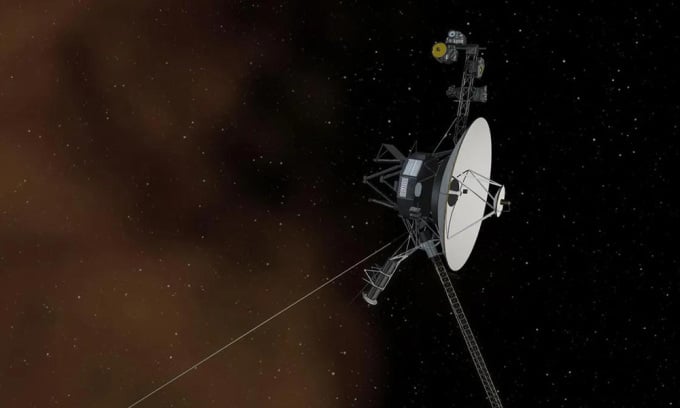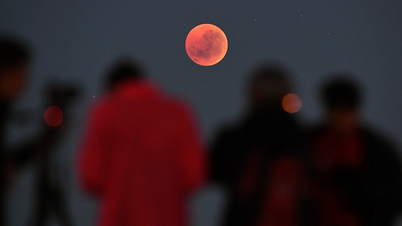Voyager 1, the most distant man-made object, is about 24 billion km from Earth and the Sun, but is still bright enough to be seen with the human eye.

Illustration of the Voyager spacecraft. Photo: NASA/JPL-Caltech
In 1977, NASA's Voyager 1 spacecraft launched into space, beginning its journey to explore the universe and bring knowledge back to humanity. Today, Voyager 1 is the farthest man-made object from Earth, traveling more than 24 billion kilometers. The spacecraft is operating in interstellar space, very far from the Sun. So if people stood next to Voyager 1, could they see it, or would they just see complete darkness?
"It's a really interesting question," experimental astrophysicist Michael Zemcov, a professor at the Rochester Institute of Technology, told Business Insider on October 24. He said that even though both Voyager 1 and Voyager 2 (which launched in 1977 and are now more than 12 billion miles from Earth) are very far away, they are still relatively bright.
First, compare the distance of Voyager 1 to the distance between Earth and the Sun (the average distance between Earth and the Sun is 150 million km). Then, use this distance to calculate the intensity of light at that distance from the Sun.
As a result, the brightness at Voyager 1's location is about 1/25,000th that of Earth during the day. But that's still about 15 times brighter than the light Earth receives on a clear full moon night.
With this light, a person could clearly see the sun-facing side of Voyager 1, though not all the colors. He could even read a book there.
Even as it continues to fly further, Voyager 1 will continue to be illuminated for quite a long time because of the Sun's influence. According to Zemcov, the Voyager duo could remain within the Sun's illumination range for hundreds, even thousands of years.
The distance the Voyagers have traveled is incredible. But in cosmic terms, they still have a long way to go, says Zemcov.
Thu Thao (According to Business Insider )
Source link



































































































Comment (0)